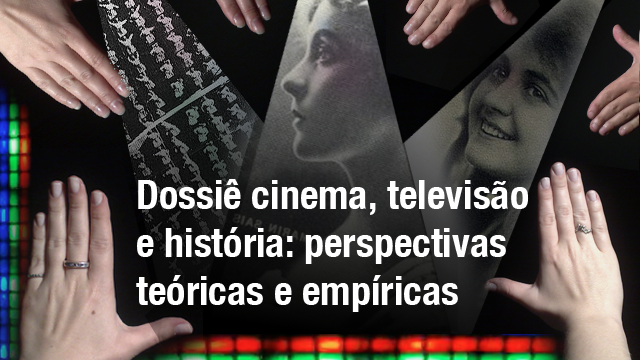TV genre as a cultural category: a place in the center of Jesús Martín-Barbero’s map of mediations
DOI:
https://doi.org/10.15448/1980-3729.2011.1.8801Keywords:
TV genre, map of mediations, Jesús Martín-BarberoAbstract
In this study we seek to understand the displacements that Jésus Martín-Barbero operates in the concept of mediation and the configuration of the map of mediations, and the place of television genres within that map. We argue that, in Barbero’s work, the concept of mediation is consolidated towards the conception of mediation in the work, and that the map of mediations establishes itself in the form of an analytical model that allows us to view the entire cultural process. We further argue that, although he seems to waver between a concept of genre as a textual category and as a communicability strategy, Martín-Barbero effectively lays the foundations for establishing a concept of the television genre as a cultural category and, in the process, establishes an analytical approach that focuses on the process of communication and its relationship with culture, politics and society.Downloads
References
BOURDIEU, Pierre. Meditações pascalianas, Rio de Janeiro: Bertrand Brasil, 2001.
BUTSCH, Richard. Five decades and three hundred sitcoms about class and gender. In: EDGERTON, Gary R.; ROSE, Brian (Org.). Thinking outside the box. A contemporary television genre reader. Kentucky: The University Press of Kentucky, 2008, p. 111-135.
CAWELTI, John G. The Six-Gun Mystique. Ohio: Bowling Green University Popular Press, 1971.
EDGERTON, Gary R.; ROSE, Brian (Ed.). Thinking outside the box. A contemporary television genre reader. Kentucky: The University Press of Kentucky, 2008.
FABBRI, Paolo. Le comunicazioni di massa in Italia: sguardo semiótico e malocchio de La sociologia. Versus, n. 5, maio/ago. 1973. Disponível em: www.semioticamente.it/versus/files/fabbri-vs5.pdf Acesso em: 12 maio 2009.
GOMES, Itania Maria Mota. A noção de gênero televisivo como estratégia de interação: o diálogo entre os cultural studies e os estudos da linguagem. Revista Fronteira, São Leopoldo, v. 4, n. 2, p. 11-28, 2002.
______. Efeito e Recepção: a interpretação do processo receptivo em duas tradições de investigação sobre os media. Rio de Janeiro: E-Papers, 2004.
______. Questões de método na análise do telejornalismo: premissas, conceitos, operadores de análise. Revista E-compos, ed. 8, abril, 2007. Disponível em: http://www .compos.org.br/seer/index.php/ecompos/article/view/126/126 Acesso em: 12 maio 2009.
JONES, Jeffrey P. Beyond genre: cable’s impact on the talk show. In: EDGERTON, Gary R.; ROSE, Brian (Org.). Thinking outside the box. A contemporary television genre reader. Kentucky: The University Press of Kentucky, 2008, p. 156-175.
MARTÍN-BARBERO, Jesús. De los medios a las mediaciones. Comunicación, cultura y hegemonía. México: Gustavo Gilli,
______. De los medios a las practicas. Cuadernos de comunicación y prácticas sociales, México, n. 1, p. 9-18, 1990.
______. La comunicación en las transformaciones del campo cultural. Alteridades, México, v. 3, n. 5, p. 59-68, 1993.
______. América Latina e os anos recentes: o estudo da recepção em comunicação social. In: SOUSA, Mauro Wilton de
(Org.). Sujeito, o lado oculto do receptor. São Paulo: Brasiliense, 1995, p. 39-68.
______. Experiencia audiovisual y desorden cultural. In: MARTÌN-BARBERO, Jesús; ROCHE, Fábio López de la (Orgs.).
Cultura, medios y sociedad. Colombia: Ces/Universidad Nacional, 1998, p. 27-64.
______. Aventuras de un cartógrafo mestizo en el campo de la comunicación. Revista Latina de Comunicación Social, La Laguna (Tenerife), n. 19, jul. 1999. Disponível em: http://www.ull.es/publicaciones/latina/a1999fjl/64jmb.htm.
______. Ofício de Cartógrafo. Travessias latino-americanas da comunicação na cultura. São Paulo: Edições Loyola, 2004.
______. Dos meios às mediações. Comunicação, Cultura e Hegemonia. Rio de Janeiro: Ed. UFRJ, 2006a.
______. Pistas para entre-ver meios e mediações. Dos meios às mediações. Comunicação, Cultura e Hegemonia. Rio de Janeiro: Ed. UFRJ, p. 11-21, 2006b.
NEWCOMB, Horace. Reflections on TV: The Most Popular Art. In: EDGERTON, Gary R.; ROSE, Brian (Org.). Thinking outside the box. A contemporary television genre reader. Kentucky: The University Press of Kentucky, 2008, p. 17-36.
______. The Most Popular Art. New York: Anchor Press, 1974.
PECORA, Norma. The changing face of children’s television. In: EDGERTON, Gary R.; ROSE, Brian (Org.). Thinking outside the box. A contemporary television genre reader. Kentucky: The University Press of Kentucky, 2008, p. 91-110.
RONSINI, Veneza V. Mayora. A perspectiva das mediações de Jesús Martín-Barbero (ou como sujar as mãos na cozinha da pesquisa empírica de recepção). In: XIX Compós, 2010, Rio de Janeiro. Anais do XIX Encontro da Compós. Rio de Janeiro: PUC-RJ, 2010.
WILLIAMS, Raymond. Marxismo e literatura. Rio de Janeiro: Jorge Zahar, 1979.
Downloads
How to Cite
Issue
Section
License
Copyright
The submission of originals to Revista Famecos implies the transfer by the authors of the right for publication. Authors retain copyright and grant the journal right of first publication. If the authors wish to include the same data into another publication, they must cite Revista Famecos as the site of original publication.
Creative Commons License
Except where otherwise specified, material published in this journal is licensed under a Creative Commons Attribution 4.0 International license, which allows unrestricted use, distribution and reproduction in any medium, provided the original publication is correctly cited.






